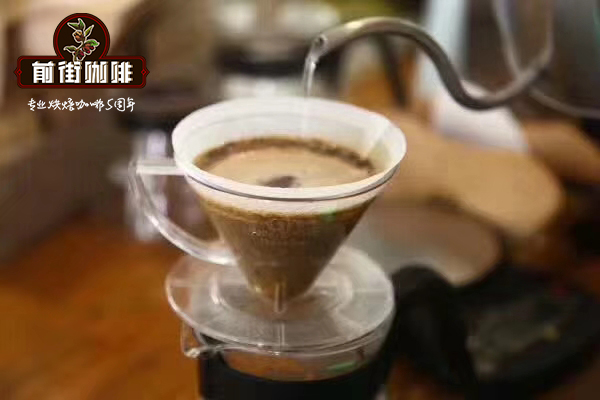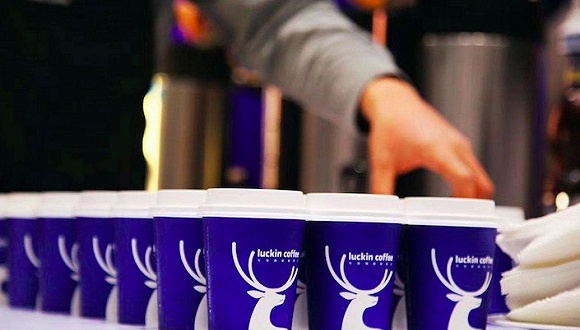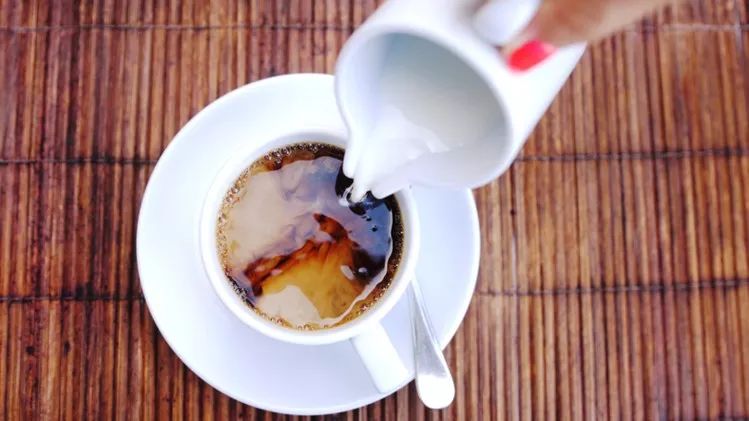How about Arabica coffee? how much is the price of Arabica coffee?

Professional coffee knowledge exchange more coffee bean information please follow the coffee workshop (Wechat official account cafe_style)
Washed Arabica coffee is the lifeblood of the boutique coffee industry, but now it is under a lot of pressure. Although there are some good sun-processed coffee and even some boutique robusta coffee, water-washed Arabica is still the most precious coffee in the industry. The problem is that they can only be grown in a few countries, and the total output of these places of origin has not changed much over the past 20 years. With the growing consumption of boutique coffee and the opening up of new markets, supply will be strongly squeezed as competition intensifies.
Outstanding advantages of Brazil and Vietnam
World coffee consumption is growing at about 2 per cent a year, with some markets growing at more than 10 per cent. Every year, global demand is breaking a new record, and today's demand is about 156 million bags (60 kg/ bags), up from less than 100 million bags in 1995. It is clear that the boutique coffee industry is one of the factors behind the renaissance, but population and economic growth in new and emerging markets has also had a huge impact.
At the same time, global supply is growing, driving up demand. Since 2000, total coffee production has increased by more than 1/3, reaching 152 million bags by 2016. But the distribution of growth is uneven. In fact, 90% of the additional supply growth comes from only two countries: Brazil and Vietnam, which now account for more than 50% of all global coffee production. Growth data from Brazil and Vietnam mean that the latest coffee supply is Robusta or tanned Arabica coffee. Other places of origin, especially those producing washable Arabica coffee, have been less successful.
What does this mean for the boutique coffee industry?
Defining and measuring the spread of boutique coffee is not easy. The definition varies from region to region and from person to person. Even the view of quality is not fixed, and has different interpretations.
It is said that what traders of washed Arabica coffee or raw coffee call "mild" coffee is generally regarded as the best quality coffee beans in the coffee trade, with the highest price. The trial drinks made from them are usually purer and consistent, especially helping to highlight the flavor configuration of individual coffee.
Growing these high-quality coffee beans requires specific climatic conditions: rainfall, temperature and sunlight, which can be met by only a small number of dimensional locations in the world. As a result, most washable Arabica coffee comes from only these regions, mainly in South and Central America and East Africa, with Colombia producing the most.
Although our data on the supply and demand of boutique coffee are extremely limited, testing washed coffee is a good way to act as an agent, and its trend is noteworthy. Although annual production in Brazil and Vietnam has more than doubled over the past 25 years, the annual production of washed Arabica coffee is roughly the same, at about 40 million bags a year. Therefore, although coffee is becoming more and more popular from a consumer point of view, boutique coffee is rapidly losing its original market share.
Graph of Production of Washed Arabica Compared to Natural Arabicas and Robustas
Why did this happen?
Water-washed Arabica coffee production is stagnant for a variety of reasons. The experience varies from country to country. For example, the outbreak of coffee leaf rust in Colombia in 2008 caused severe damage to Arabica production, which has only now returned to its original production after a large-scale conversion programme at a high cost.
In 2013, leaf rust broke out again, sweeping much of Central America, leaving hundreds of people out of work and millions of bags of coffee unable to be exported. Many countries have not yet recovered.
In addition to pests and diseases, the coffee crisis in early 2000 caused international coffee prices to fall below 50 cents per pound, forcing many manufacturers to withdraw permanently from the market. Competition from other cash crops is already fierce, while increased pressure on land use, especially the increase in real estate demand brought about by urban expansion, has reduced the inherent attractiveness of coffee. Nairobi, Kenya, is a good example, where growers sell their coffee farms to developers for apartments, shopping malls and other commercial purposes.
Then, since 1990, production in some of your favorite coffee producing areas has plummeted. El Salvador has fallen from 3 million bags in 1992 to 620000 today, while Costa Rica, Kenya and Mexico are all about 50 per cent lower than they were at their peak in the early 1990s.
Graph_Coffee Production Collapse-Is Arabica Washed Out Tom Copple 25 Magazine Issue 2
Even in countries where production has increased, the outlook is far from optimistic. Ethiopia's output has more than doubled over the past 25 years, but according to a recent survey released by the Royal Botanical Gardens, the country is at the forefront of climate change and is in danger of reducing acreage by 60 per cent by the end of the century. In addition, the growth of Peru and Honduras is also strong, but these two countries are now also facing a battle against coffee leaf rust. It has recently been found that varieties of coffee resistant to leaf rust in Honduras have been infected, which adds to the difficulty. And while the fate of major producers of washable Arabica coffee has been complicated over the past 25 years, many countries have ended up suffering heavy losses.
Prospects for the future
It is expected that the production of washed Arabica coffee will not be solved in the short term. Triple threats (climate change, ageing growers and unprofitable prices) have become a reality in many producing countries, while high-quality varieties valued by the boutique coffee industry (such as bourbon, geisha or SL28) are also the riskiest coffee.
Looking ahead, if the current production of washed Arabica coffee (40 million bags per year) is maintained, they may account for only 21 per cent of world production by 2030. And even if this level is maintained, there is no guarantee. In fact, the long-standing stability of total production is mainly due to the efforts of several countries, especially those with strong domestic coffee institutions, such as the National Federation of Coffee Growers of Colombia (FNC) or the Honduran Coffee Institute (IHCAFE).
As the impact of climate change becomes more and more obvious, it will be more and more difficult to maintain this level of output. The areas most suitable for coffee production will change, and in many cases drastic changes will be needed to find a better place. As coffee trees get older, they are less productive and more likely to get sick, so they need to be replaced and replanted. Urbanization and economic development are driving up land prices and providing better opportunities for the younger generation, who may not want to grow coffee. The boutique coffee industry will face the competitive problem of its declining share in the coffee cake chart.
What should we do?
The key to protecting boutique coffee in the future is to strengthen cooperation. We must strengthen the links between producers and consumers to ensure that their incentives are consistent. At present, the inherent volatility of international coffee prices and the unpredictability of potential returns are the main forces to curb the passion of many producers. For the boutique coffee industry to be truly sustainable, buyers need to identify growers (and vice versa) so that coffee can effectively develop into orders.
It is urgent to invest in coffee research. Washed Arabica coffee is usually the most vulnerable to outbreaks of weather shocks, climate change and leaf rust. We need to better understand the impact of these changes and figure out how to best adapt. Some of this work is already under way, but it requires more horsepower, which requires financial support.
Finally, as an industry, we need to continue to promote the consumption of quality coffee. By establishing a clear and reliable boutique coffee market, the industry can promote sustainable production, while paying a certain quality premium can ensure that producers are encouraged to maintain good quality in the market. The challenge of boutique coffee production is both realistic and direct, but it is not insurmountable.
THOMAS COPPLE is a researcher, analyst and former economist at the International Coffee Organization.
Related recommendations: drink coffee, Arabica beans contain the least caffeine
Important Notice :
前街咖啡 FrontStreet Coffee has moved to new addredd:
FrontStreet Coffee Address: 315,Donghua East Road,GuangZhou
Tel:020 38364473
- Prev

The rumor has been confirmed! Luckin Coffee completes the round B financing with a valuation of $2.2 billion!
Professional coffee knowledge exchange more coffee bean information please follow the coffee workshop (Wechat official account cafe_style) on December 12 Luckin Coffee (luckin coffee) announced the completion of round B financing of US $200m, with a post-investment valuation of US $2.2 billion. Pleasure Capital, Dawei Capital, GIC (GIC), China International Capital Corporation and others participated in this financing. After completing the financing, the pleasure capital
- Next

new trend in the industry| Milk and sugar are obsolete? Creams and sweeteners are the new favorites in coffee mates.
Professional coffee knowledge exchange More coffee bean information Please pay attention to the rapid development of coffee category in Coffee Workshop (Weixin Official Accounts cafe_style), driving the rapid growth of cream and sweetener! Coffee is experiencing massive growth and consumers are finding new ways to enjoy their coffee. Plant-based creamer, premium RTD selection and shelf stability are all in the coffee industry
Related
- What brand of black coffee is the most authentic and delicious? what are the characteristics of the flavor of the authentic Rose Summer Black Coffee?
- Introduction to the principle and characteristics of the correct use of mocha pot A detailed course of mocha pot brewing coffee is described in five steps.
- Which is better, decaf or regular coffee? how is decaf made?
- How much is a bag of four cat coffee?
- How about four Cat Coffee or Nestle Coffee? why is it a cheap scam?
- Which is better, Yunnan four Cats Coffee or Nestle Coffee? How about cat coffee? is it a fake scam? why is it so cheap?
- How about Cat Coffee? what grade is a hoax? which instant coffee tastes better, four Cat Coffee, Nestle Coffee or G7 coffee?
- Process flow chart of coffee making-Starbucks coffee making process what coffee tastes good at Starbucks
- The top ten best coffee beans in the world Rose summer coffee or Tanzanian coffee tastes good
- Yunnan four cat coffee is good to drink?_four cat coffee is a big brand? four cat blue mountain coffee is fake?

